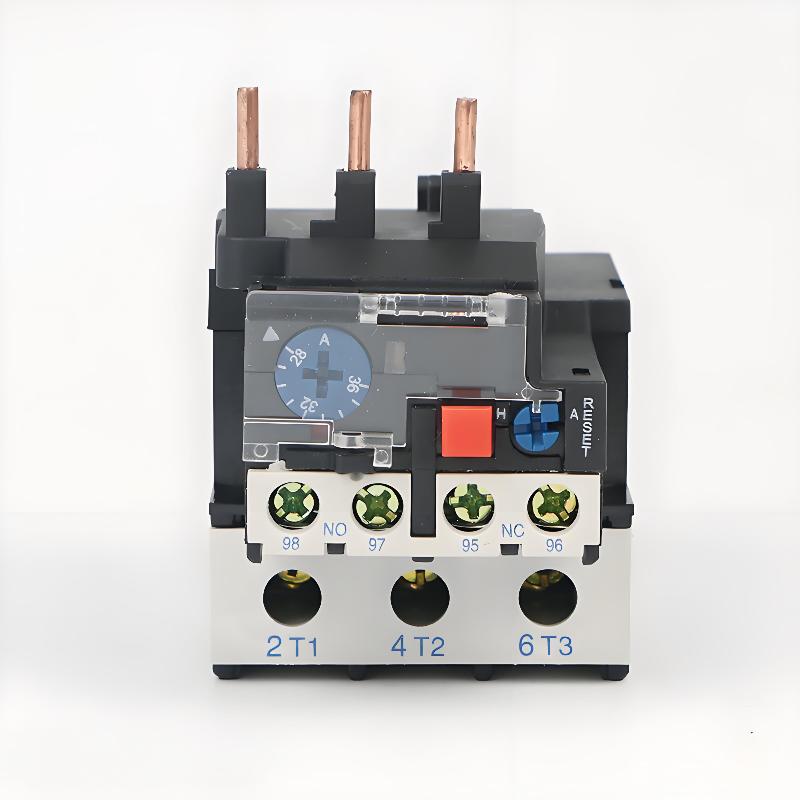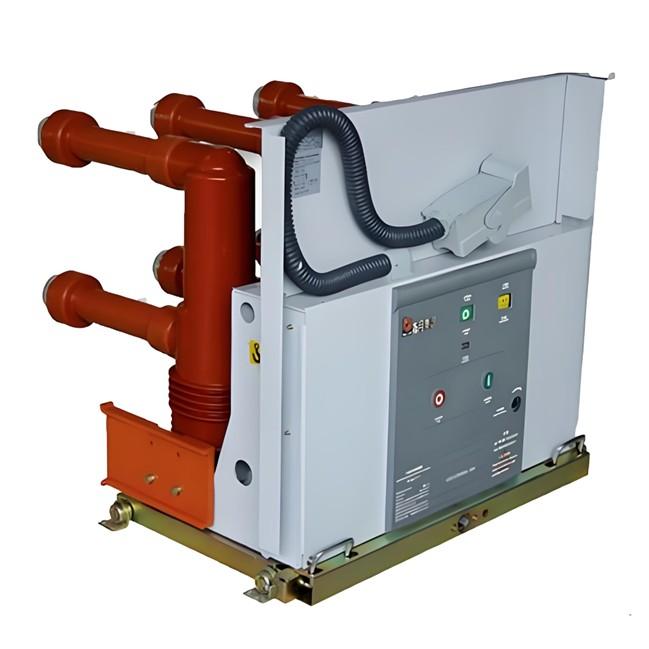Wannan makaranta ta shirya misalai don koyar da zakaici na logic ta zaɓi ɗaya 10kV steel tubular poles, tana magana game da abubuwa masu yawa, kiyaye da yanayin da suka samu, da kuma abubuwan da ke buƙata waɗanda ana iya amfani da su a cikin koyar da zakaici na 10kV overhead line. Kowane wurare (kamar wasu lokaci mai gaba ko kasa mai kyau) suna buƙatar ingantaccen bayanai daban-daban don in ba da tabbacin cikakken ɗaya.
Abubuwan Da Ke Buƙata Don Zaɓi Ɗaya Na Overhead Transmission Line
Zaɓin daidai na overhead line ɗaya na bi muhimmanci wajen harkar da yawan kayan adawa, tsari, da kuma cin kofin da lafiya, kawai da wannan abubuwan da ke buƙata don in ba da jirgin daidai na ɗaya a cikin ranar da ɗaya:
Yadda Ake Bayyana Tsarin Kayan Adawa
Amsa da kayan adawa da suka fi sani, kamar ice thickness da conductors da ground wires, reference design wind speed (da aka yi da ita a cikin terrain category B), da kuma seismic response spectrum characteristic period. Idan an yi a wurare masu yawan kayan adawa (kamar altitude mai gaba, kasa mai kyau), yana buƙata sauran local climatic correction factors don in ba da overloading na ɗaya saboda lack of parameters.
Principle Ta Economic Optimization
Standardized tower types and heights should be prioritized to maximize utilization of the tower's rated load capacity and reduce custom designs. For strain towers with large turning angles, optimize positioning to reduce tower height. Combine high and low towers according to terrain features to avoid using high towers throughout the line, which would waste costs.
Safety Load Verification Requirements
Straight-line Towers: Strength is controlled primarily by high-wind conditions; verification of tower body bending moment and deflection under maximum wind speed is required.
Strain Towers (Tension Towers, Angle Towers): Strength and stability are determined by conductor tension; turning angle and maximum conductor usage tension must be strictly controlled. Structural strength must be recalculated if design limits are exceeded.
Special Conditions: When conductors are transposed, verify that the electrical clearance meets code requirements after insulator string deflection. When using a higher voltage grade steel tower, confirm that the ground wire protection angle meets lightning protection requirements. When the strain tower crossarm deviates from the angle bisector, both tower strength and electrical safety distance must be verified simultaneously.
Standard Tower Selection Process
To ensure selection rationality and safety, the following 7-step systematic design process must be followed to form a closed-loop selection logic:
Meteorological Zone Determination: Based on meteorological data for the project location, determine the meteorological zone (e.g., ice thickness, maximum wind speed, extreme temperature) as the basis for load calculation.
Conductor Parameter Screening: Determine conductor type (e.g., ACSR, aluminum-clad steel-cored aluminum), number of circuits, and safety factor (typically not less than 2.5).
Stress-Sag Table Matching: Based on selected meteorological parameters and conductor type, retrieve the corresponding conductor stress-sag relationship table to determine the applicable span range.
Preliminary Tower Type Selection: Based on tower classification (straight-line pole, strain tower) and tower load limit tables, preliminarily screen tower types meeting span and conductor cross-section requirements.
Tower Head and Crossarm Design: Based on regional line layout characteristics (e.g., single-circuit/double-circuit, presence of low-voltage lines on the same pole), select tower head configuration (e.g., 230mm, 250mm tower head) and crossarm specifications.
Insulator Selection: According to altitude (insulation level must be corrected if over 1000m) and environmental pollution level (e.g., industrial areas are pollution level III), determine insulator type (e.g., porcelain, composite) and number of units.
Foundation Type Determination: Based on geological survey reports (soil bearing capacity, groundwater level), tower technical parameters, and foundation force verification results, select stepped, bored pile, or steel pipe pile foundations.
Special Design Principles for 10kV Steel Tubular Poles
For 10kV overhead line characteristics, steel tubular pole design must meet the following technical requirements, balancing structural stability and construction convenience:
3.1 Basic Parameters and Application Scope
Span Limit: For straight steel tubular poles, horizontal span Lh ≤ 80m, vertical span Lv ≤ 120m.
Conductor Compatibility: Can carry aluminum conductor insulated lines such as JKLYJ-10/240 or below, ACSR such as JL/G1A-240/30 or below, aluminum-clad steel-cored aluminum such as JL/LB20A-240/30 or below.
Wind Pressure Coefficient: Wind pressure height change coefficient is uniformly calculated according to terrain category B (e.g., wind pressure coefficient 1.0 at 10m height, 1.2 at 20m height).
3.2 Structure and Material Requirements
Pole Body Design:
➻ Sectioning Rule: 19m pole in 2 sections, 22m pole in 3 sections; sections connected by flanges (flanges must be machined from solid steel plate, splicing prohibited).
➻ Cross-Section Form: Main pole is a 16-sided regular polygon cross-section, taper uniformly 1:65.
➻ Deflection Control: Under long-term load combination (no ice, wind speed 5m/s, annual average temperature), maximum top deflection ≤ 5‰ of pole height.
➻ Force Calculation Point: Design values and standard values of bending moment, horizontal force, and downward force at the base are all calculated at the bottom flange connection of the steel tubular pole.
Material Standards:
➼ Main Pole and Crossarm: Use Q355 grade steel, material quality not lower than Class B, material certification must be provided.
➼ Corrosion Protection: Entire pole (including main pole, crossarm, accessories) uses hot-dip galvanizing process; galvanizing thickness requirements: minimum ≥70μm, average ≥86μm; adhesion test required after galvanizing (grid method with no peeling).
3.3 Foundation and Connection Design
Foundation Types: Supports stepped, bored pile, and steel pipe pile foundations; selection must consider:
➬ Groundwater Level: In presence of groundwater, soil buoyant unit weight and foundation buoyant unit weight must be used in bearing capacity calculation to avoid buoyancy effects.
➬ Frost Heave Soil Areas: Foundation embedment depth must be below local frost depth (e.g., ≥1.5m in Northeast China).
Connection Requirements:
➵ Anchor Bolts: Use high-quality No. 35 carbon steel, strength grade ≥5.6; bolt diameter and quantity must match flange forces (e.g., 19m pole with 8 sets of M24 bolts).
➵ Installation Process: Steel tubular pole is rigidly connected to foundation via anchor bolts; bolt tightening torque must meet design requirements (e.g., M24 bolt torque ≥300N·m).
Example of 10kV Straight Steel Tubular Pole Selection
10kV straight steel tubular poles are classified by tower head size and application scenario. Core selection examples are as follows, covering typical conditions for single-circuit and double-circuit lines:
4.1 230mm Tower Head Series Steel Tubular Poles
Pole Lengths: 19m, 22m;
Application: 10kV single-circuit line, no low-voltage line on same pole;
Conductor Compatibility: Conductors with cross-section ≤240mm² (e.g., JKLYJ-10/120, JL/G1A-240/30);
Span Limit: Horizontal span ≤80m, vertical span ≤120m;
Structural Features: Tower head horizontal spacing 800mm, longitudinal spacing 2200mm, crossarm uses single-arm layout (compatible with single-circuit conductors).
4.2 250mm Tower Head Series Steel Tubular Poles
Pole Lengths: 19m, 22m;
Application: 10kV double-circuit line, no low-voltage line on same pole;
Conductor Compatibility: Each circuit carries conductors with cross-section ≤240mm² (e.g., double-circuit JL/LB20A-240/30);
Span Limit: Horizontal span ≤80m, vertical span ≤120m;
Structural Features: Tower head horizontal spacing 1000mm, longitudinal spacing 2200mm, crossarm uses symmetrical double-arm layout (compatible with double-circuit conductors, avoiding phase interference).






















